Summary
- Soviet Mil V-12 helicopter could land without a runway, offering potential in military and remote transport.
- Mil V-12 fell short of its full potential and led to development of the powerful Mil Mi-26.
- Despite being discontinued, the V-12 project influenced future vertical take-off transport aircraft globally.
The largest helicopter ever built was the Soviet Union prototype designed in the mid-1960s. The prototype performed its first successful flight in July 1968. The Mil V-12 had the potential to change air travel forever. For a number of reasons, the gigantic helicopter fell far short of its lofty promises but gave engineers a unique window into the world of large-scale rotorcraft.
Unlike fixed-wing aircraft, helicopters are dynamic and can operate without virtually any infrastructure whatsoever. While a massive runway is required for a conventional cargo lifter, a helicopter can land on little more than an open patch of dirt.
The potential of massive rotor-powered airlifters cannot be understated. Such aircraft could provide massive advantages in military operations, landing in combat zones with virtually no support. During peacetime, the massive helicopters could transport massive loads to extremely remote parts of the Soviet Union.
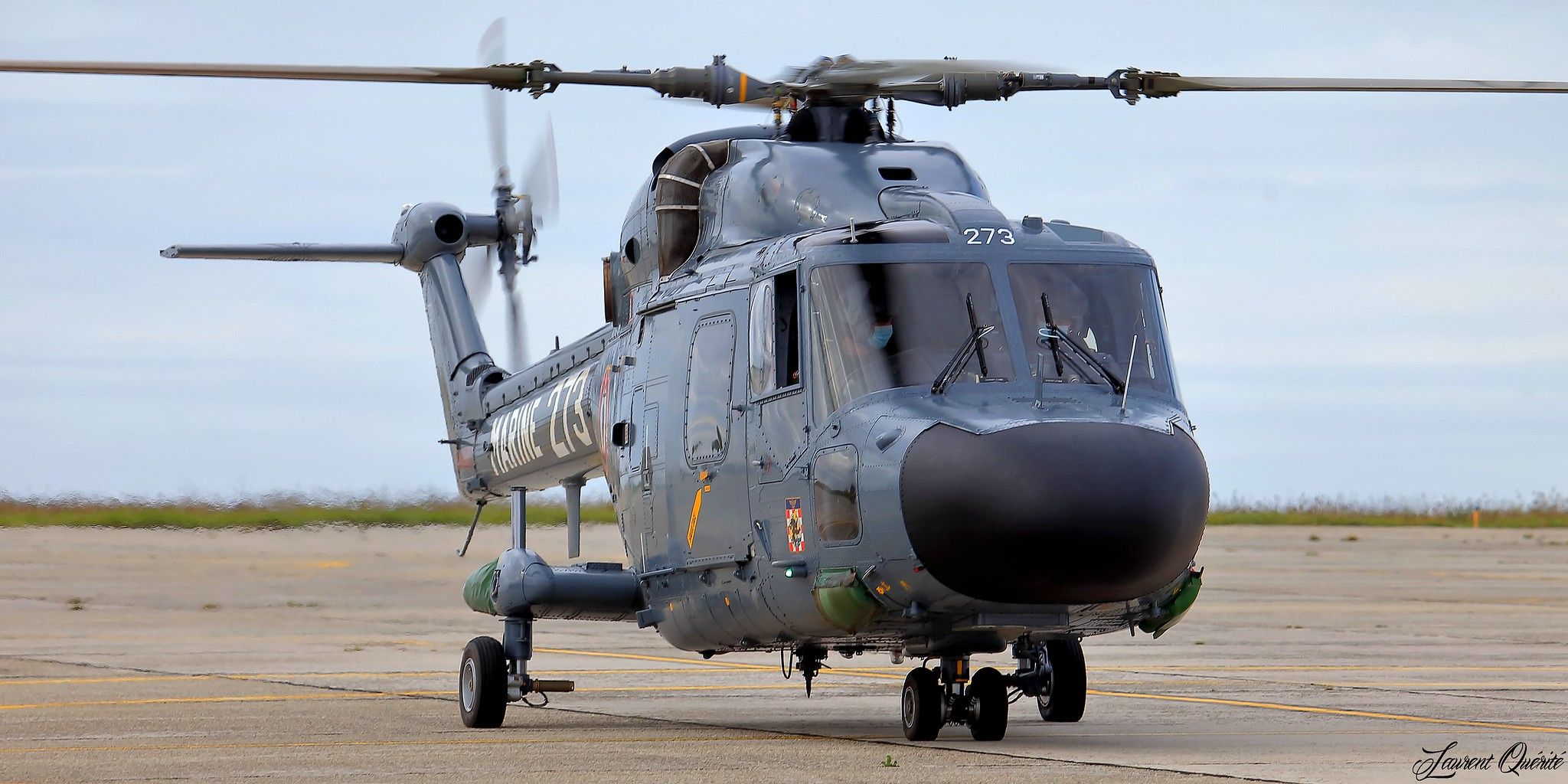
Related
Top 5: Inside The World’s Fastest Helicopters
The world’s five fastest helicopters are all military.
On the commercial side, these aircraft could allow airlines to serve unconventional routes, connecting cities that do not have major airport facilities. Upon noticing this immense potential, Soviet engineers sought to create the ultimate helicopter. In this article, we will take a closer look at the story of Mil V-12.
The background
In the early 1960s, the Soviet Union considered building a helicopter with a comparable capacity to the large Antonov An turboprop. Unlike the four-engine plane that needed a runway for taking off and landing, the helicopter, which would soon be designated as the Mil V-12, would have been able to collect the cargo at the source and deliver it directly to where it needed to go without the need for runways.
Alleviating the need for road, rail, or river transport, this huge helicopter would have been handy for transporting Cold War-era military hardware, such as intercontinental ballistic missiles (ICBMs). When engineers began to design the helicopter, they wanted to build a machine similar to the Boeing CH-47 Chinook with rotors at the front and tail. However, it never reached full-scale production.
The helicopter’s size made engineers study various options
- Capacity: 196 passengers
- Length: 37 m (121 ft 5 in)
- Wingspan: 67 m (219 ft 10 in) across rotors
- Height: 12.5 m (41 ft 0 in)
- Empty weight: 69,100 kg (152,339 lb)
- Max takeoff weight: 105,000 kg (231,485 lb)
The size of the helicopter that they tried to create had certain limitations, which ultimately led them to look at a traditional single-rotor and side tail rotor design. This proved a non-starter, forcing them instead to select a transverse layout, according to Plane Historia. This system with rotors mounted on either side at the tips of a wing, somewhat like a Bell Boeing V-22 Osprey, alleviated the need for a tail rotor.
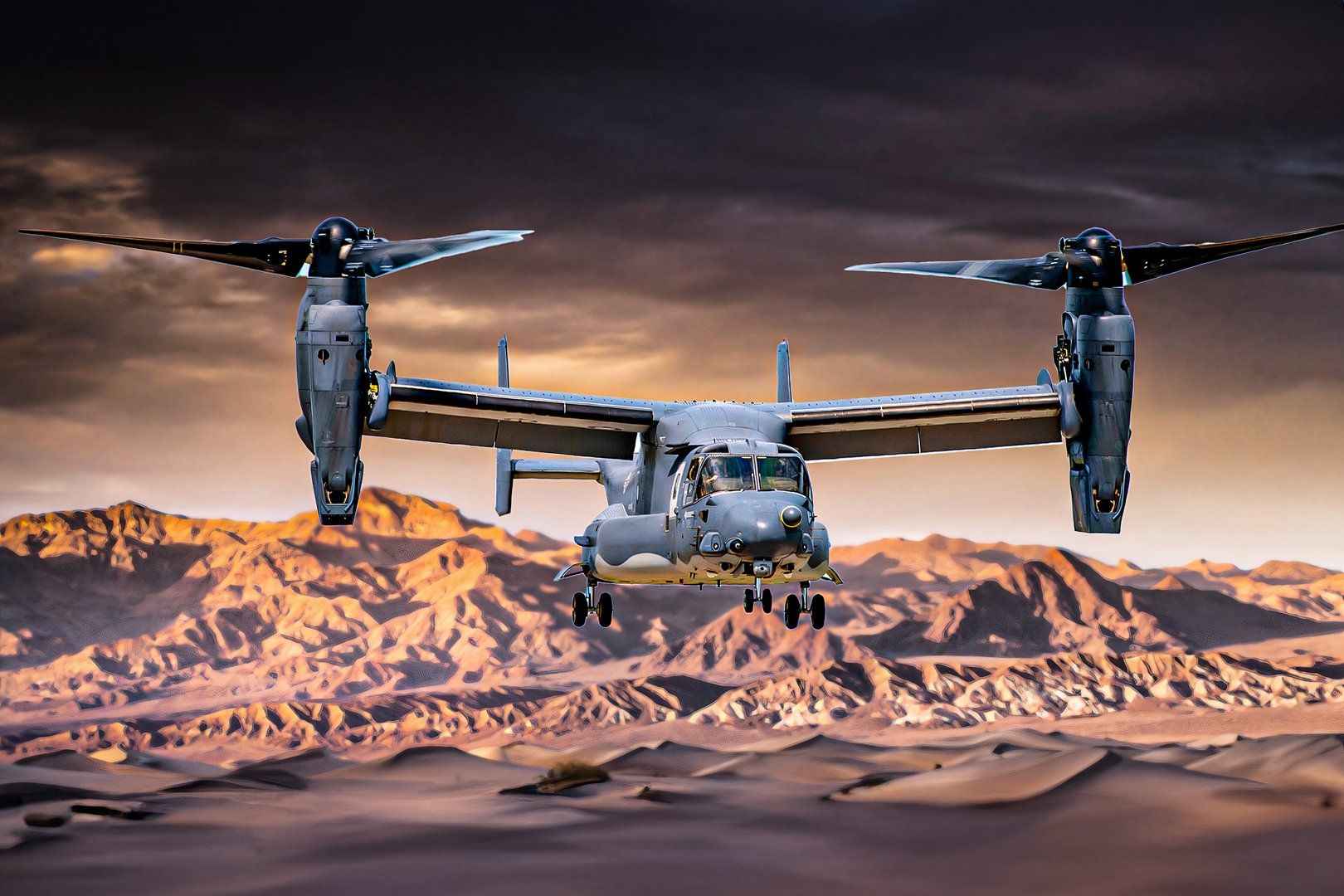
Related
Is The V-22 Osprey A Helicopter Or A Plane?
The aircraft has characteristics of both.
After exhaustive testing, the first Mil V-12 prototype eventually began construction using a conventional airframe with a stretched skin and high-strength metal. The aircraft’s fuselage measured over 90 feet in length, and it had a wing span of over 215 feet across both rotors.
The two-floor cabin and crew section was located at the front, with the pilot, co-pilot, flight engineer, and electrical engineer in the lower cockpit. Meanwhile, people such as the radio operator and navigators used the upper section.
A unique design
At the rear of the aircraft, the helicopter featured clamshell doors and a drop-down cargo ramp. Side doors in the fuselage also gave access to the cargo hold. Situated above the back of the fuselage was a modestly sized tailfin. According to Aviastar, power for the helicopter was provided by two Soloviev D-25VF turbo-shaft engines designed to drive the 115-foot rotor blades. The first prototype of the Mil V-12 flew in 1968.
Meanwhile, the second prototype was revealed to the West at the 1971 Paris Air Show. The North Atlantic Treaty Organization (NATO) gave it the reporting name ‘Homer.’ Before the French trip, the Mil V-12 entered the history books by setting two load-carrying records. In February 1969, it lifted 31 tonnes to a height of 9,682 feet and then, that August, ferried 40.2 tonnes to an altitude of 7,398 feet, according to the FAI.
A passenger version of the Mil V-12 was discussed
While the Mil V-12 was primarily designed for military transport use, there was also talk of a passenger-carrying version being built for Aeroflot. To give an idea of how big the helicopter was, if a passenger version had been built, it would have been able to carry 196 passengers: the same amount as a two-class Airbus A321neo.
Engineers at the Mil Design Bureau also thought that the Mil V-12 would be especially useful for mining and logging operations in remote parts of Siberia where there was little or no road access. By the time production was ready to begin, the Soviet Union no longer needed the rapid deployment of ICBMs, heavily decreasing interest in the massive V-12.
As such, all work was subsequently stopped on the Mil V-12, and work began designing the Mil Mi-26. Pictured above, this aircraft was the largest and most powerful helicopter ever to be put into serial production. While the development of the Mil V-12 played a role in the building of the Mi-26, the prototypes are still the largest helicopters ever built. In their short career, they set several more records.
Other world records
- Maximum speed: 260 km/h (160 mph, 140 kn)
- Cruise speed: 240 km/h (150 mph, 130 kn)
- Range: 500 km (310 mi, 270 NM)
- Ferry range: 1,000 km (620 mi, 540 NM) with external fuel tanks
- Service ceiling: 3,500 m (11,500 ft)
- Hovering ceiling in ground effect: 10 m (33 ft)
- Hovering ceiling out of ground effect: 600 m (1,969 ft)
In addition to the two records mentioned earlier, the Mil V-12 set another six during its short operational career. Of these, four reportedly remain current today. The six other records consisted of the maximum altitude achieved with payloads of 15, 20, 25, 30, 35, and 40,000 kg. The first four of these were achieved in the February 1969 flight to 9,682 feet, with the other two set that August at 7,398 feet.
The idea lived on
The goals of the V-12 project, however, still do exist and multiple other nations around the globe would try their hands at building powerful vertical takeoff and landing transport aircraft. The British-built Fairey Rotodyne which, while smaller than the V-12, was another example of a large-scale vertical-takeoff transport, drew attention both from commercial airlines in the United Kingdom and the Royal Air Force (RAF).

Related
eVTOL Conundrum: Helicopter Airlines Haven’t Been Successful – What’s Different Now?
History shows a failed business model, but electric rotorcraft may just have an ace up their sleeve.
Much like the Russian prototypes, the Rotodyne also never achieved its full potential. In the future, the rise of electric vertical take-off and landing (eVTOL) aircraft could be the key to finally developing commercially viable rotor-powered airliners.
Did you know about the Mil V-12? What’s the largest helicopter that you’ve ever seen or flown on? Let us know your thoughts and experiences in the comments section!

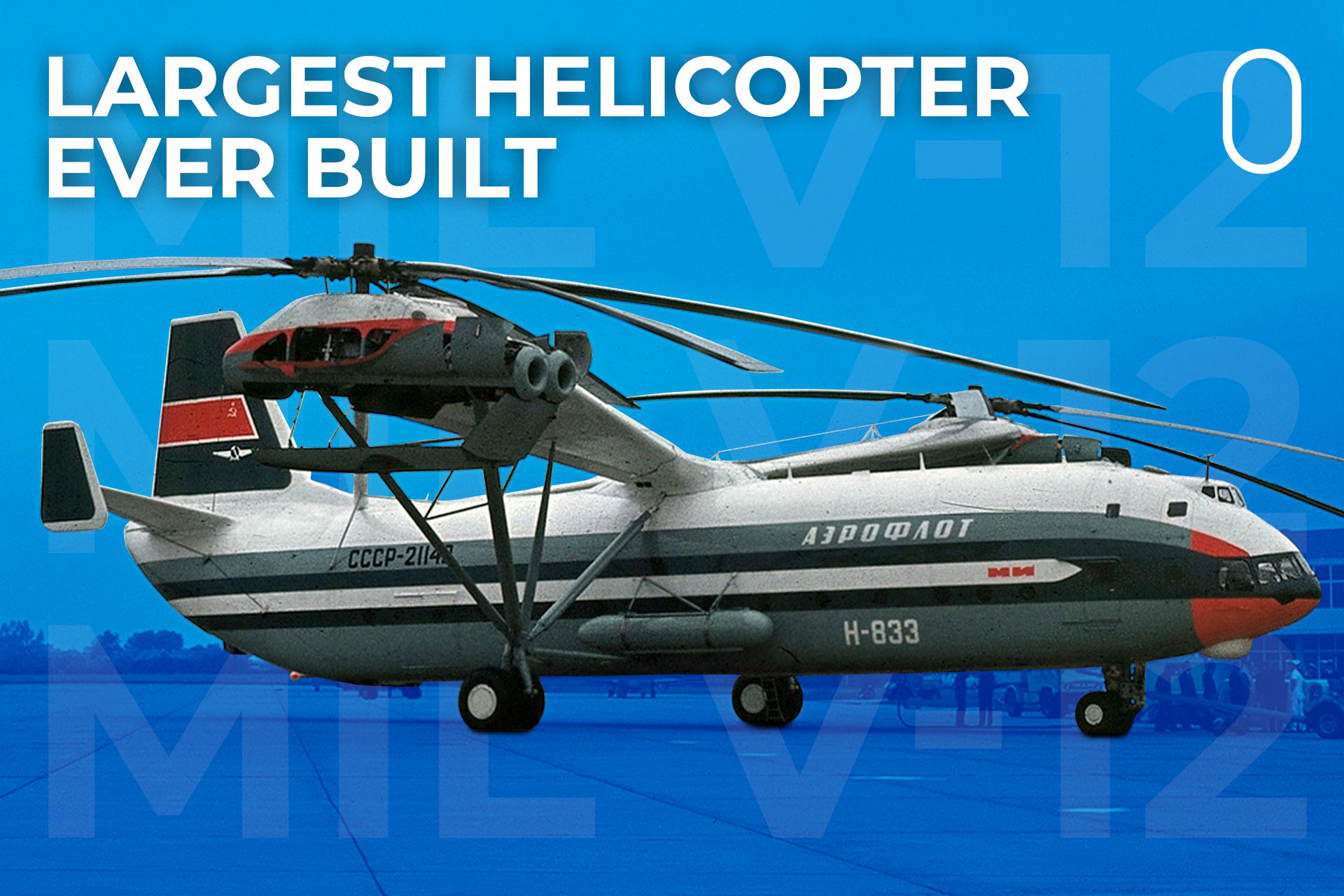
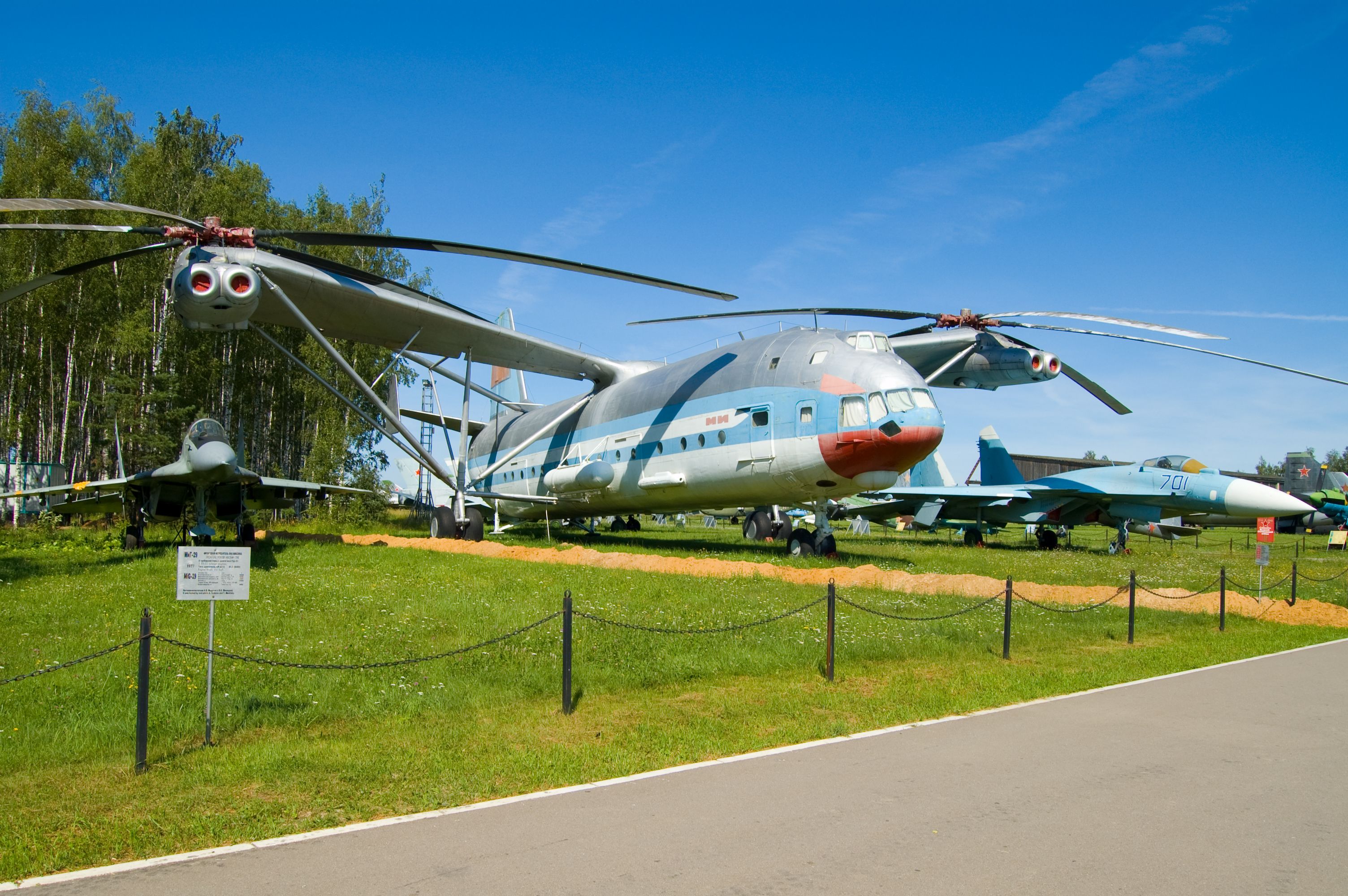
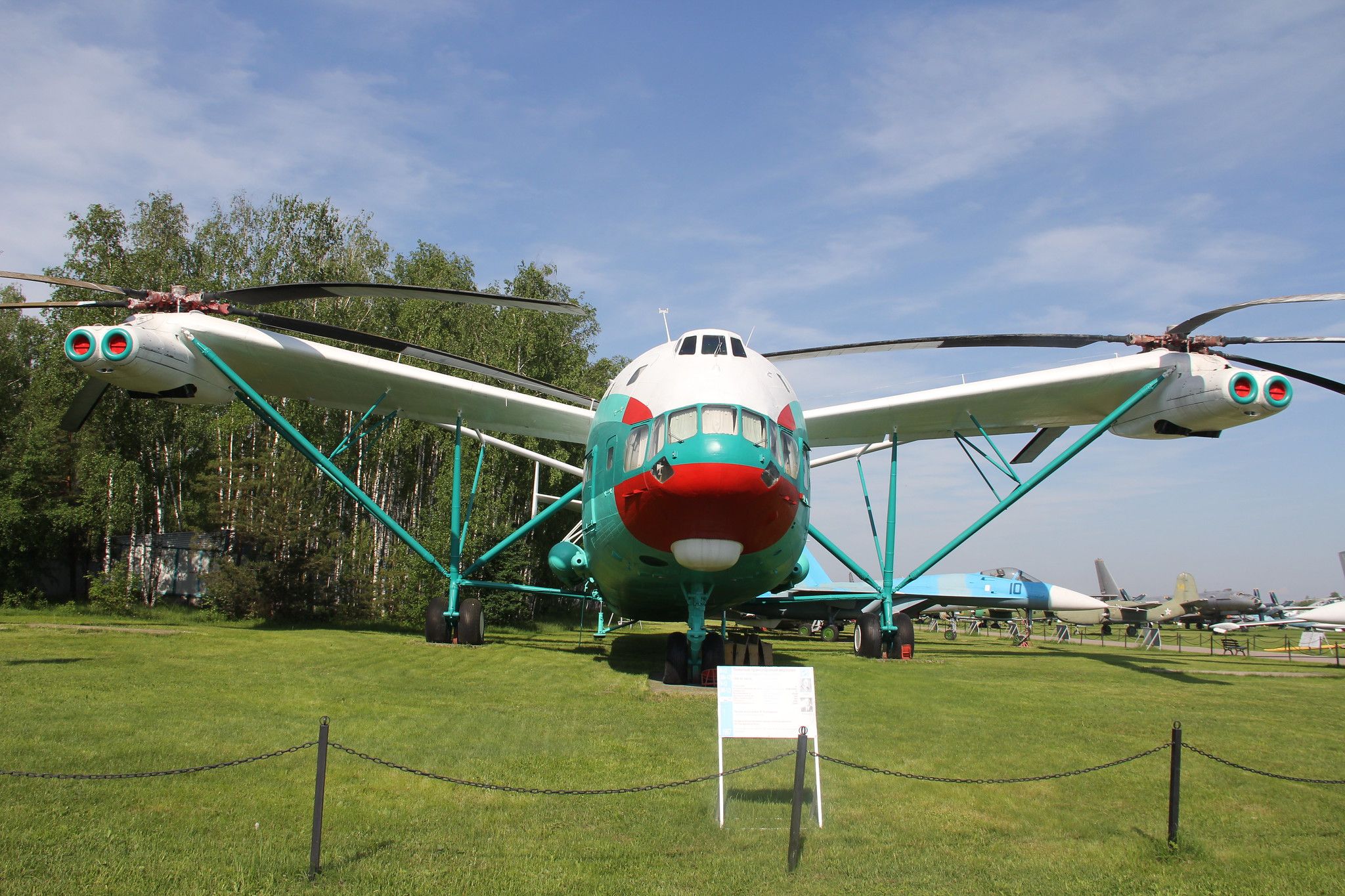
.jpg)